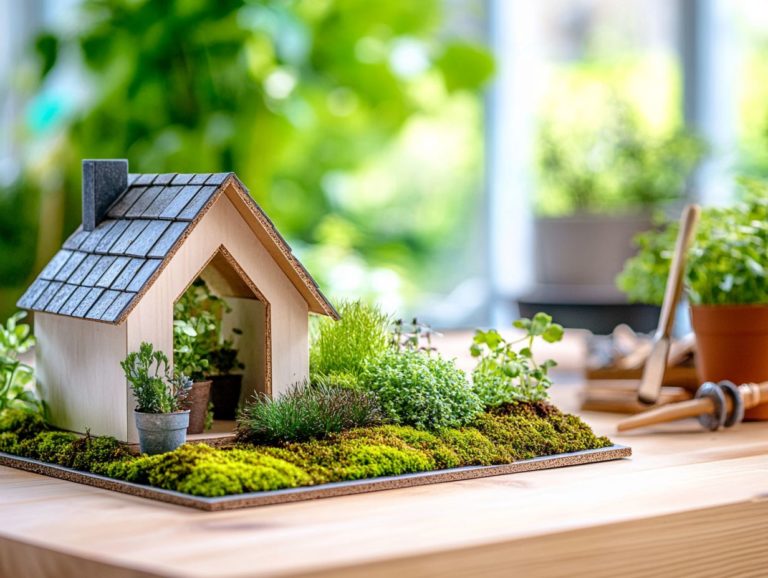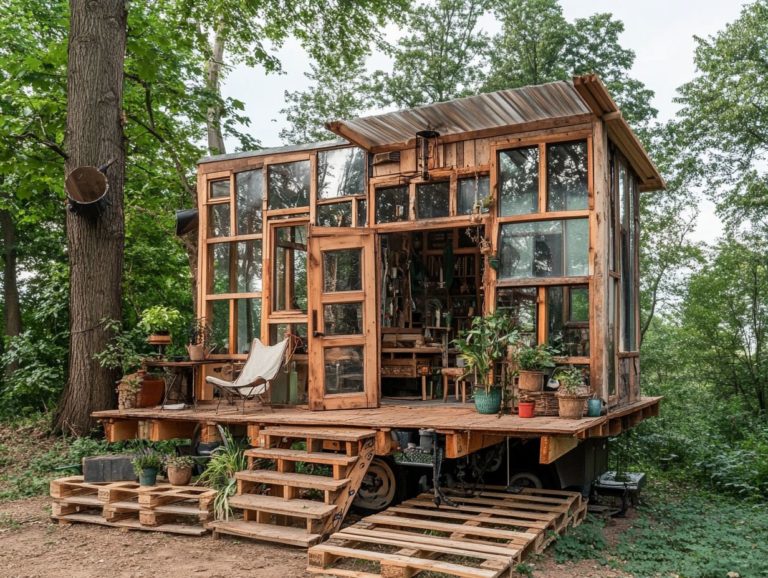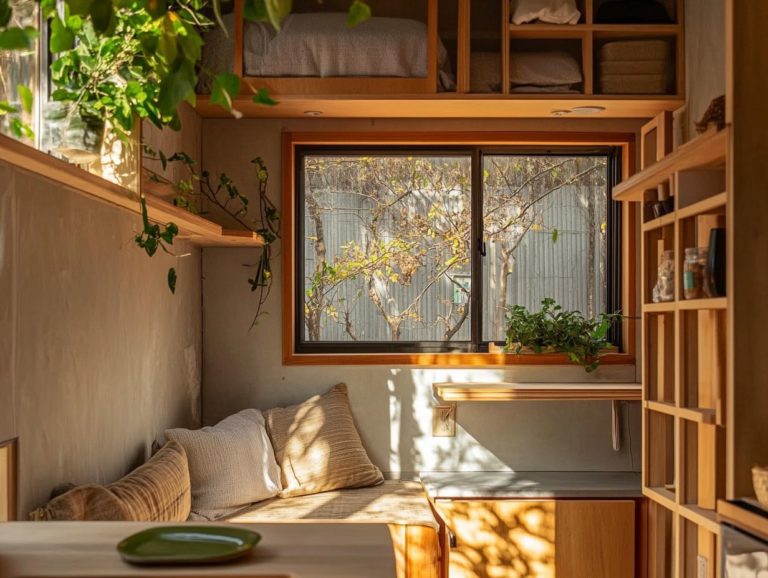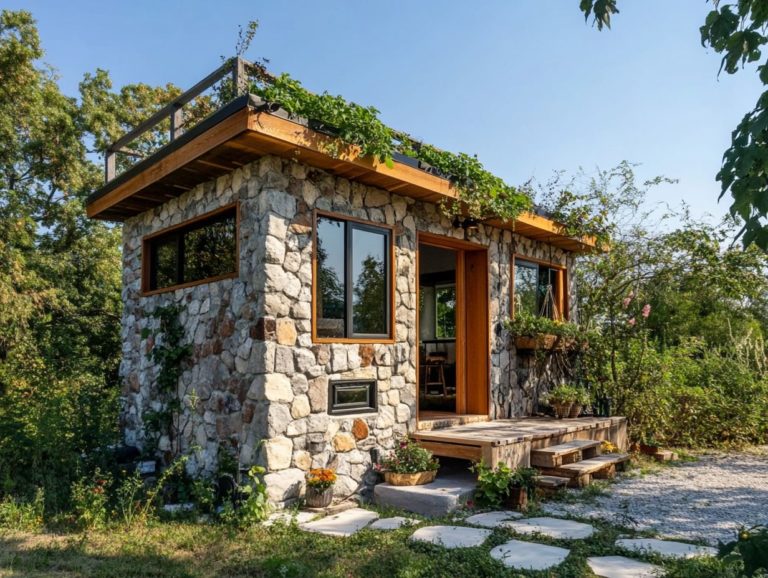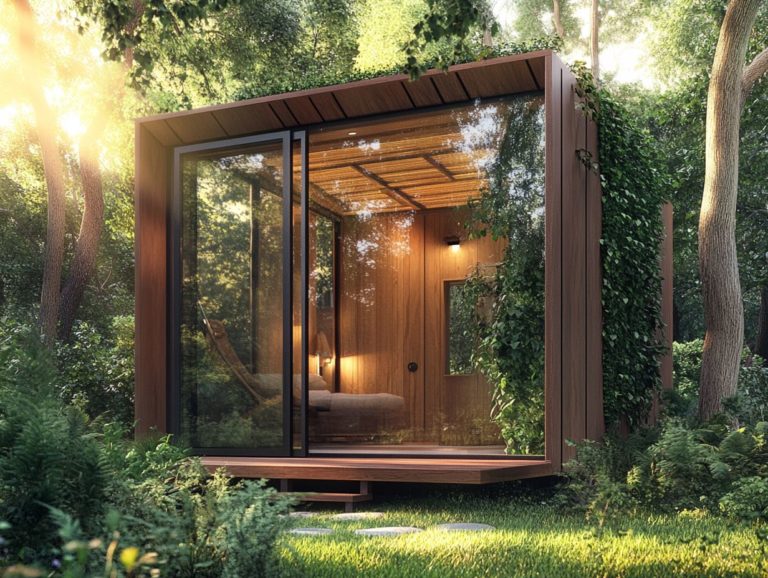The Importance of Sustainability in Tiny House Communities
Tiny house communities are gaining traction as an innovative response to modern living challenges. They seamlessly merge minimalism with sustainability.
These compact homes shrink environmental footprints and cultivate social interactions and economic advantages. You ll discover the fundamental principles of sustainable tiny house living, from energy conservation to eco-friendly materials.
You will also explore the challenges these communities face, such as zoning regulations, and innovative solutions that pave the way for vibrant, affordable neighborhoods.
Get ready to explore how tiny homes are changing lives today!
Contents
- Key Takeaways:
- The Rise of Tiny House Communities
- Why Sustainability Matters in Tiny House Communities
- Principles of Sustainable Tiny House Living
- Overcoming Challenges in Tiny House Communities
- Frequently Asked Questions
- 1. What is the importance of sustainability in tiny house communities?
- 2. How do sustainable practices benefit tiny house communities?
- 3. Are there any challenges to implementing sustainability in tiny house communities?
- 4. How can sustainability improve the overall well-being of tiny house community members?
- 5. In what ways can sustainability benefit the surrounding community?
- 6. What steps can be taken to ensure long-term sustainability in tiny house communities?
Key Takeaways:
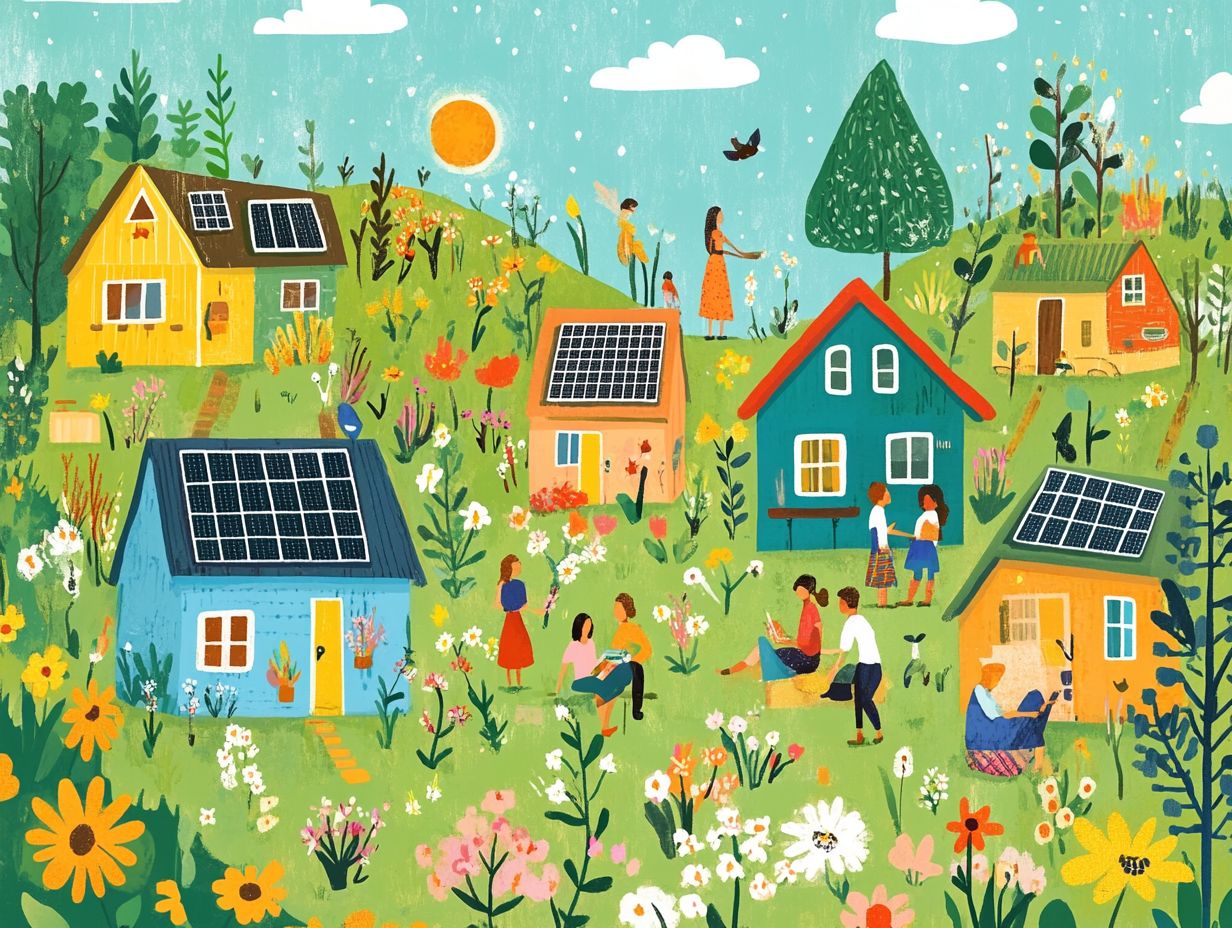
- Sustainability is crucial in tiny house communities due to its positive impact on the environment, as well as its social and economic benefits.
- Practicing sustainable principles like reducing energy consumption, using sustainable materials, and minimizing waste is key to creating a sustainable tiny house community.
- Challenges such as zoning and legal issues can be overcome through community collaboration and education, enabling thriving sustainable tiny house communities.
The Rise of Tiny House Communities
The emergence of tiny house communities showcases a growing trend toward sustainable and downsized living. Individuals and families are embracing the tiny house movement, valuing eco-friendly materials, affordable housing, and creative design.
These compact homes, often constructed using innovative building materials, provide financial advantages and embody the principles of mindful consumption and a reduced environmental impact. In the U.S., initiatives advocating for tiny homes are gaining momentum, resulting in a rise in cooperative living arrangements that promote community engagement and resource sharing.
Overview of the Movement
The tiny house movement has become a transformative lifestyle choice in the U.S., supported by advocates like Joyce Augustine, who highlight the many benefits of downsized living and environmental consciousness.
This grassroots movement gained momentum in the early 2000s, as more people sought alternatives to conventional housing often burdened by high costs and significant environmental impacts. Influential figures such as Jay Shafer and Derek Diedricksen have been pivotal in popularizing this idea, promoting tiny homes not just as a pathway to personal freedom but also as a sustainable option that reduces waste and energy consumption.
The cultural significance of this movement resonates in today s society, where many prioritize experiences over material possessions, embracing simplicity and intentionality. By choosing smaller spaces, you can focus more on your surroundings and cultivate a deeper connection to nature, enjoying all the numerous benefits that tiny houses offer.
Why Sustainability Matters in Tiny House Communities
Sustainability is vital in tiny house communities, where these innovative living spaces champion energy efficiency and drastically reduce the carbon footprint of their residents.
This approach aligns perfectly with green practices that prioritize and protect our environment.
Environmental Impact
The environmental impact of tiny house communities is significant, as these homes often embrace eco-friendly materials and smart design that help minimize their carbon footprint and tackle climate change directly.
By choosing sustainable building materials like reclaimed wood, bamboo, and non-toxic insulation, you help reduce the demand for harmful resources. Tiny homes promote carbon capture with green roofs and home gardens, which absorb carbon and enhance biodiversity.
These dwellings, due to their compact size, require less energy for heating and cooling, leading to remarkable energy efficiency. This shift toward smaller living spaces supports a more sustainable lifestyle and maintains a lower carbon footprint, making tiny homes an appealing choice for those who are eco-conscious.
Social and Economic Benefits
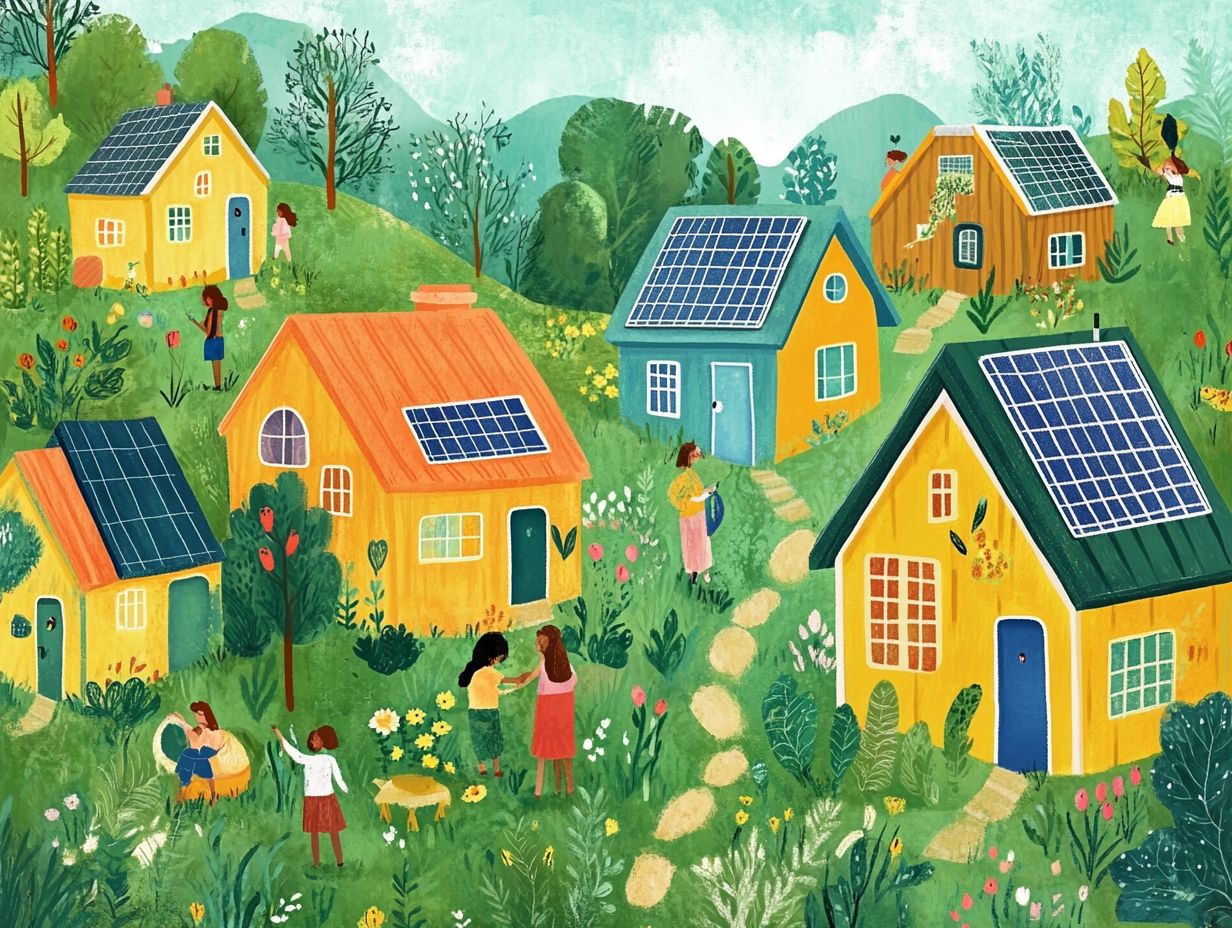
Tiny house communities present remarkable social and economic advantages, particularly significant savings on utilities and maintenance. This makes them an appealing choice for those in search of affordable housing.
Living in these compact spaces often means smaller mortgages or even no mortgage at all. This results in lower monthly payments and less financial stress.
The simplified lifestyles embraced by residents allow for a more efficient use of resources, further driving down living costs.
These communities foster deeper connections among neighbors, encouraging cooperative living arrangements and the sharing of resources. This builds a strong network of community support.
The broader implications are substantial: tiny homes offer a viable solution to escalating property prices, enabling individuals and families to invest in their futures without the weight of traditional homeownership.
Principles of Sustainable Tiny House Living
The principles of sustainable tiny house living center on reducing energy consumption, employing sustainable building materials, and minimizing waste. This approach cultivates an eco-friendly lifestyle that encourages mindful consumption.
It allows you to live harmoniously with your surroundings while making intentional choices.
Reducing Energy Consumption
Reducing energy consumption in your tiny home can be elegantly achieved through thoughtful design choices, such as integrating solar power and LED lighting to boost energy efficiency.
These innovations reduce your reliance on traditional electricity sources and create a vibrant tiny house community.
You might opt for high-efficiency appliances that consume significantly less power than standard models, further diminishing your carbon footprint.
Implementing proper insulation techniques will help you maintain comfortable indoor temperatures, reducing the need for heating and cooling.
This further enhances your energy efficiency. Many tiny home enthusiasts also explore wind turbines and geothermal systems as alternative renewable energy solutions.
Together, these strategies create a holistic approach to energy-saving practices, making tiny living not only eco-friendly but also economically savvy.
Using Sustainable Materials
The selection of sustainable materials is crucial for creating both durable and environmentally responsible tiny homes.
- Bamboo: a rapidly renewable resource that reaches maturity in just a few years.
- Thermally modified wood: ensures longevity and sustainability.
- Insulated compact panels: enhance energy efficiency.
By choosing these materials, you can significantly reduce your carbon footprint while ensuring that your structures stand the test of time.
Reclaimed wood not only helps minimize waste but also adds a unique character and charm to your tiny home designs.
Utilizing advanced insulation techniques with compact panels allows you to enjoy comfort without the burden of excessive energy consumption.
Minimizing Waste
Minimizing waste is at the heart of tiny house living, encouraging you to embrace mindful consumption.
Engaging in DIY projects can spark your resourcefulness and boost sustainable practices.
For instance, recycling will become second nature. You might find yourself repurposing old materials from renovations into stylish fixtures or furniture, reducing the need for new purchases.
Composting transforms kitchen scraps and organic waste into nutrient-rich soil for your tiny garden, cutting down on landfill contributions.
This practice promotes self-sufficiency and sustainability.
Integrating multi-functional items into your living space not only maximizes utility but also slashes consumption. It’s a smart move for any tiny house enthusiast!
By making informed choices, you can cultivate an eco-friendly environment that truly reflects your commitment to sustainability.
Start your journey towards sustainable tiny living today!
Overcoming Challenges in Tiny House Communities
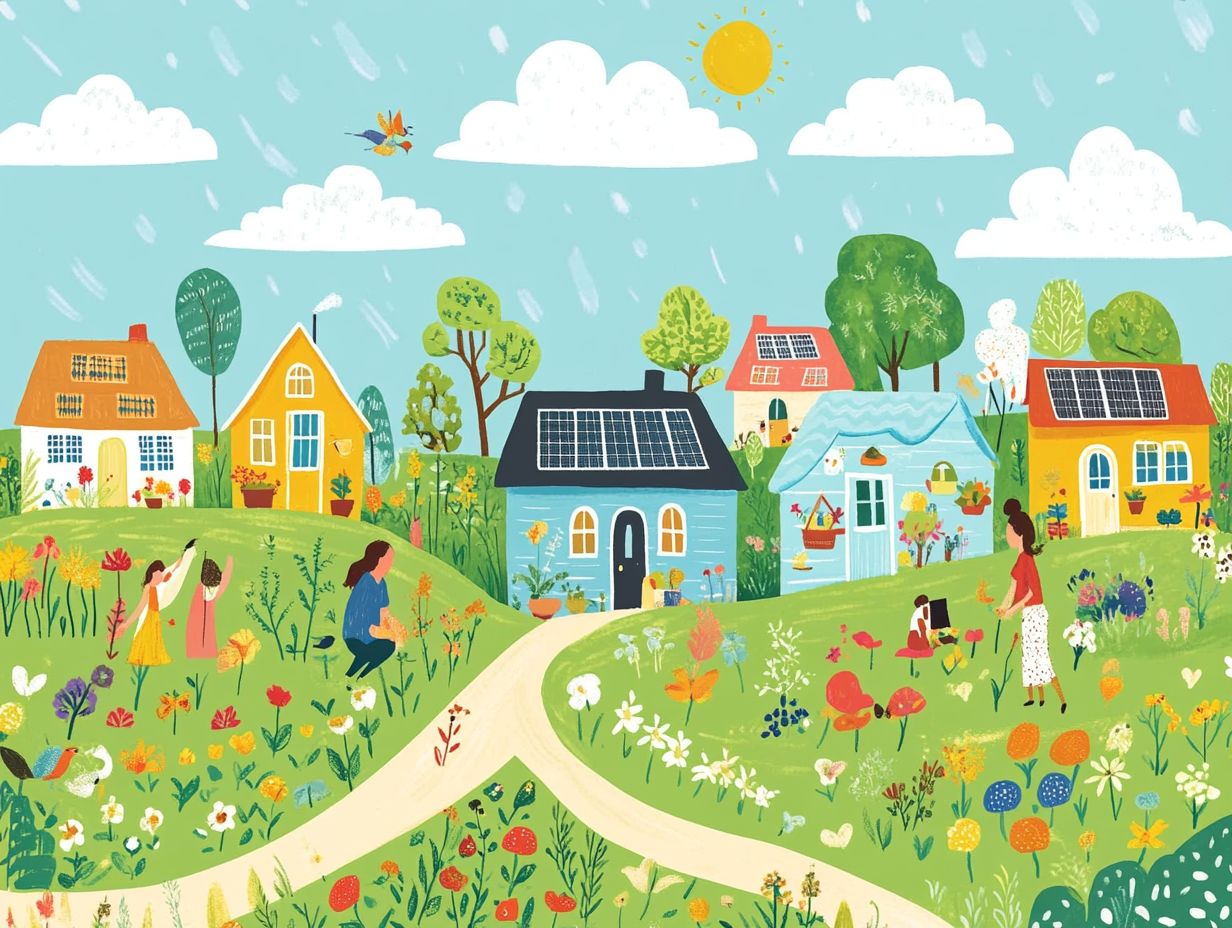
Tiny house communities offer many benefits. However, challenges like zoning and legal issues often hinder growth.
Engaging in community collaboration and education is essential. This helps you navigate the complexities involved.
Zoning and Legal Issues
Zoning and legal issues present significant challenges for tiny house communities. These regulations often dictate where you can place these homes and how you can use them.
Such regulations can vary considerably from one municipality to another, leading to confusion for those who wish to embrace a minimalist lifestyle. Many local zoning laws even categorize tiny houses as recreational vehicles, disqualifying them from being recognized as permanent dwellings.
To tackle these obstacles, advocates for tiny house communities push for revised zoning classifications that align with this growing trend. By collaborating with local governments, you can help establish flexible guidelines that permit tiny homes on foundations. Innovative solutions like co-housing models where multiple families share resources and spaces can bridge the gap between conventional housing and the aspiration for sustainable living.
Community Collaboration and Education
Community collaboration and education are critical for navigating the challenges faced by tiny house communities. This cultivates a shared understanding of sustainable living practices.
Local governments and non-profit organizations can inspire you to explore the benefits of downsizing and minimalism. Workshops promote a lifestyle that minimizes consumption while enhancing your quality of life.
Initiatives that host community-build events sharpen your skills and strengthen bonds among participants. These events demonstrate how tiny homes foster a genuine sense of belonging.
Local educational programs, such as pop-up classes focused on DIY tiny house construction or sustainable gardening, show how community engagement intertwines with innovative living solutions to create vibrant, connected neighborhoods.
Frequently Asked Questions
1. What is the importance of sustainability in tiny house communities?
Sustainability in tiny house communities is crucial for preserving the environment and reducing the carbon footprint. It promotes a self-sufficient and eco-friendly lifestyle for community members.
2. How do sustainable practices benefit tiny house communities?
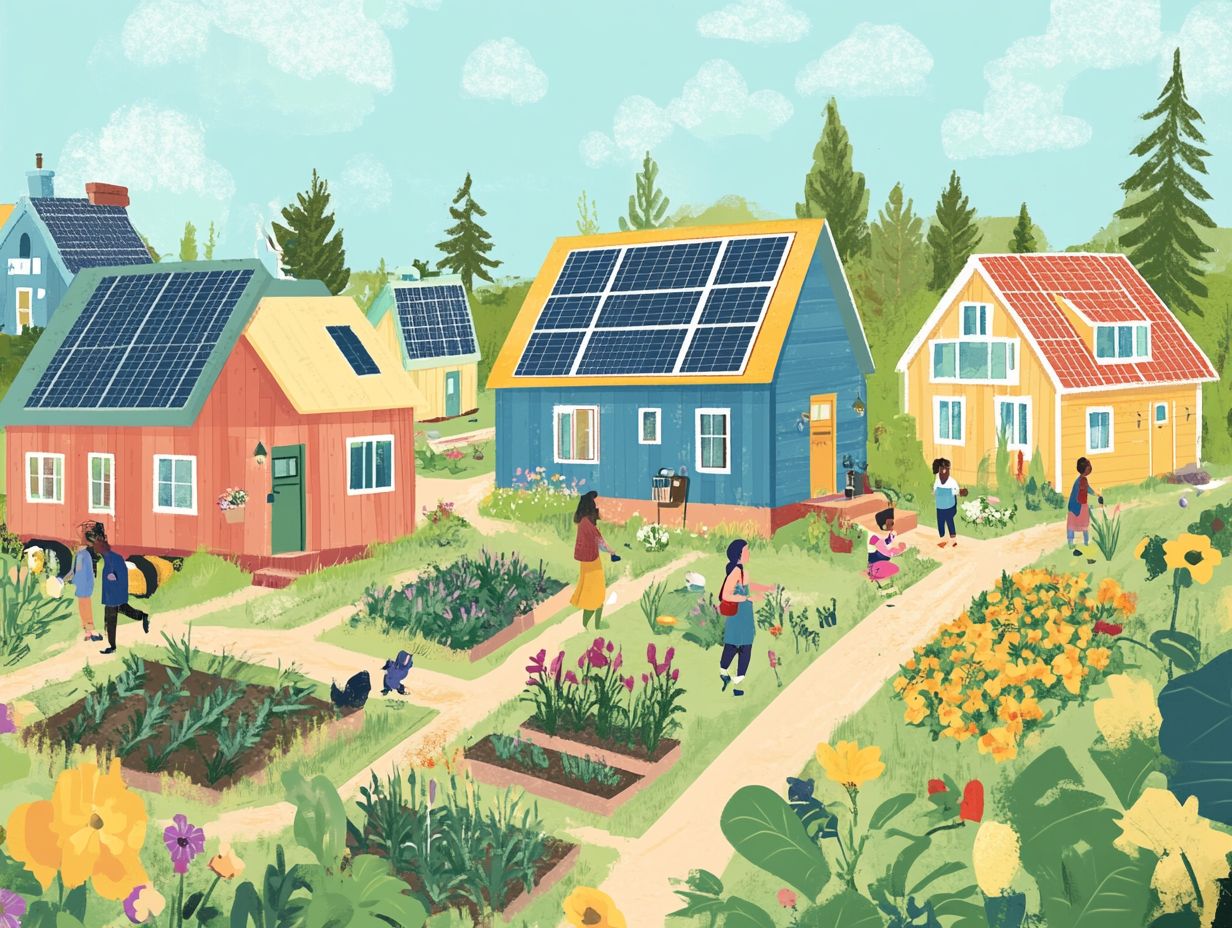
Sustainable practices, such as using renewable energy sources, composting, and water conservation, can decrease monthly expenses for residents. They also create a more environmentally friendly living space.
3. Are there any challenges to implementing sustainability in tiny house communities?
Limited space can challenge sustainable practices. However, innovative solutions like vertical gardening and compact composting systems can help overcome these challenges.
4. How can sustainability improve the overall well-being of tiny house community members?
Sustainability promotes a healthier lifestyle by encouraging community members to consume and waste less. It fosters a sense of community and connection, leading to a better quality of life.
5. In what ways can sustainability benefit the surrounding community?
Sustainable practices in tiny house communities can positively impact the surrounding community by reducing pollution, conserving resources, and promoting a more sustainable way of life.
6. What steps can be taken to ensure long-term sustainability in tiny house communities?
Steps include implementing sustainable building practices, creating a community garden, and conducting regular audits to identify areas for improvement. Educating everyone involved is vital for success!

